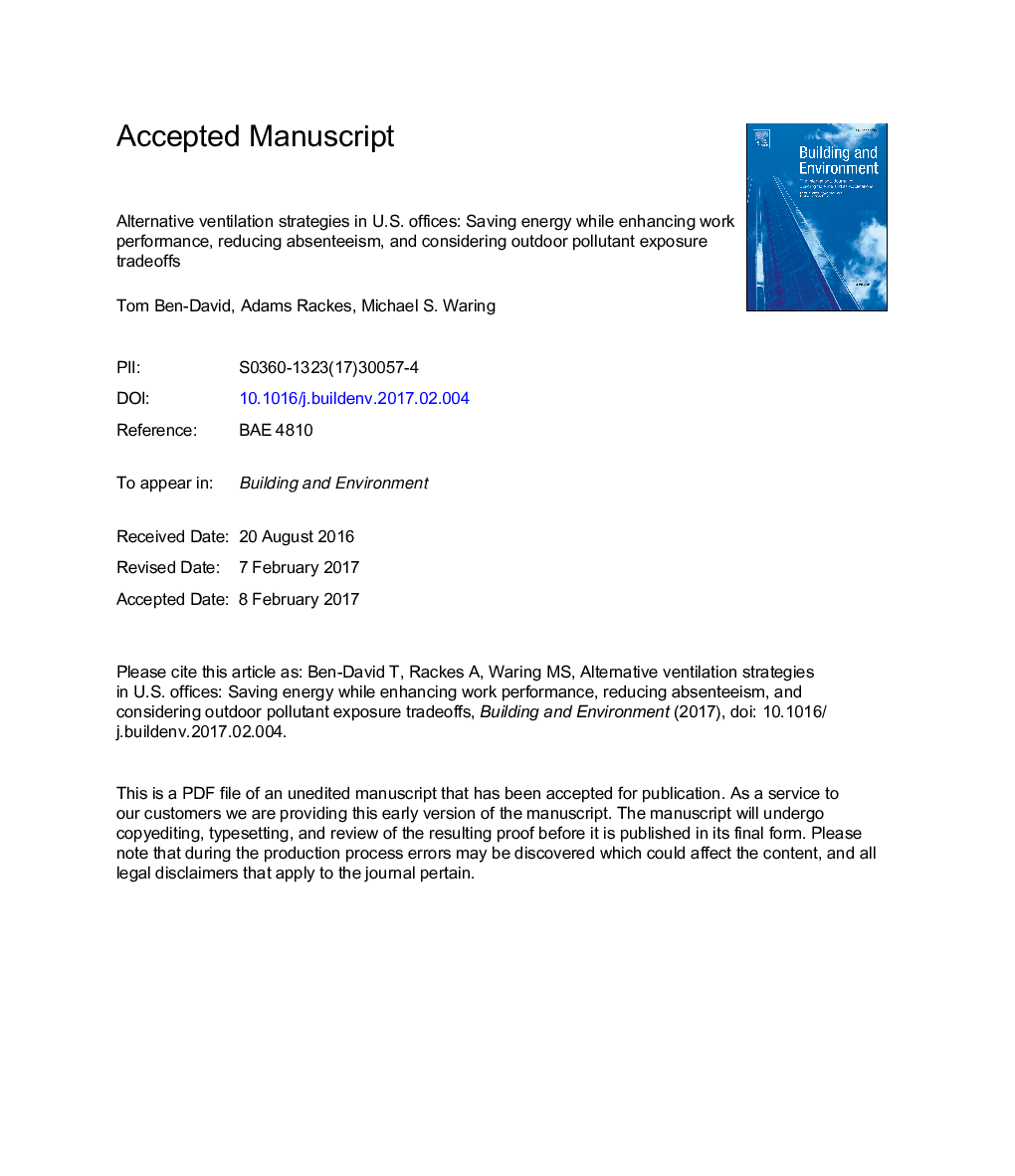| کد مقاله | کد نشریه | سال انتشار | مقاله انگلیسی | نسخه تمام متن |
|---|---|---|---|---|
| 4917385 | 1428376 | 2017 | 52 صفحه PDF | دانلود رایگان |
عنوان انگلیسی مقاله ISI
Alternative ventilation strategies in U.S. offices: Saving energy while enhancing work performance, reducing absenteeism, and considering outdoor pollutant exposure tradeoffs
ترجمه فارسی عنوان
استراتژی های تهویه جایگزین در دفاتر ایالات متحده: صرفه جویی در انرژی در حالی که افزایش عملکرد کار، کاهش غیبت و توجه به مزایای مواجهه با آلودگی در فضای باز
دانلود مقاله + سفارش ترجمه
دانلود مقاله ISI انگلیسی
رایگان برای ایرانیان
کلمات کلیدی
موضوعات مرتبط
مهندسی و علوم پایه
مهندسی انرژی
انرژی های تجدید پذیر، توسعه پایدار و محیط زیست
چکیده انگلیسی
Mechanical ventilation can improve occupant productivity, use or save energy, and increase outdoor-to-indoor pollutant transport. This work explores those impacts for eight ventilation strategies, relative to a baseline constant mechanical ventilation rate (VR) of 9.4 L/s/occ, in two representative offices. Strategies were unique combinations of airside economizing, demand-controlled ventilation, and supply air temperature reset, along with doubling the baseline VR. These were evaluated within a Monte Carlo analysis that varied climate and outdoor pollution, along with 19 building parameters. Energy modeling, empirical correlations, and indoor air quality (IAQ) modeling were used to quantify outcomes of: (i) energy use; (ii) profitable IAQ impacts, e.g. work performance; and (iii) negative IAQ health impacts due to indoor particle and ozone exposure. 'Win-win' strategies were defined as those that saved energy and increased work performance, and these always included an economizer. Relative to the baseline, the win-win strategies: increased annual geometric mean VRs by 5-10 L/s/occ; reduced mechanical system energy consumption by 12-27% (saving $1-1.75/m2/year); increased work performance by 0.5%; eliminated 5 h of absenteeism per year; and increased indoor PM2.5 by 0.5 μg/m3 and ozone by 3 ppb. A sensitivity analysis identified infiltration and climate as the largest outcome drivers. Median annual benefits for small-to-medium-large offices in the U.S. (â¼75% of office floorspace) were $28 billion for implementing the win-win strategy with the greatest energy savings, and $55 billion for implementing the win-win strategy with the greatest work performance increase. Particle exposure tradeoffs were mitigated by use of efficient filters.
ناشر
Database: Elsevier - ScienceDirect (ساینس دایرکت)
Journal: Building and Environment - Volume 116, 1 May 2017, Pages 140-157
Journal: Building and Environment - Volume 116, 1 May 2017, Pages 140-157
نویسندگان
Tom Ben-David, Adams Rackes, Michael S. Waring,
